1854
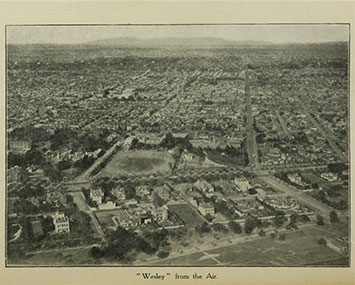
Methodists, encouraged by a government grant and gift of a suitable site, began work to establish a school on St Kilda Road.
This early aerial image looks east and shows the Front Turf extending along Moubray Street to the tree-lined boulevard of St Kilda Road. In the foreground, mansions from the 1870s and 1880s occupy the territory between St Kilda Road and peaceful Queens Road, with a glimpse of the Albert Park boatshed and lake in the bottom right corner. The Prep School on Punt Road can just be seen on the Back Turf, and Mercer Street and cottages where the chapel was later built.
Apart from tennis courts, Wesley does not yet occupy the territory extending to High Street. The large buildings in the middle distance mark the Chapel Street shopping precinct. High Street, with its electric trams, extends east towards Armadale and Malvern. Institutions for the ill, blind, aged and deaf are near neighbours of the College.
La Trobe Picture Collection, State Library of Victoria
Sir Charles Darling, Governor of Victoria, laid the foundation stone of Wesley College on 4 January 1865.
1866
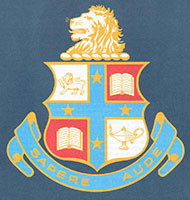
‘Sapere Aude’
In 1866 the College motto was confirmed as Sapere Aude (from Horace, Ep. I. ii 40) – translated as ‘dare to be wise’. The school colours, purple and gold, were also adopted. Between 1876 and 1901, the school colours were changed to light blue and white – colours still incorporated in the school crest. The use of blue and white continued until 1902 when the purple and gold scheme was reinstated.
Founders of the College
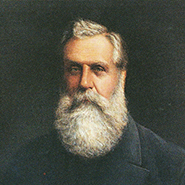 Rev James S Waugh served as first President of the College Council from 1866 to 1884. He lived onsite and played an active role in the administration and life of the College. A great benefactor, Rev Waugh is remembered in the naming of the Council meeting room and in a fine portrait by Frank Goldstraw, fifth Headmaster of Wesley College.
Rev James S Waugh served as first President of the College Council from 1866 to 1884. He lived onsite and played an active role in the administration and life of the College. A great benefactor, Rev Waugh is remembered in the naming of the Council meeting room and in a fine portrait by Frank Goldstraw, fifth Headmaster of Wesley College.
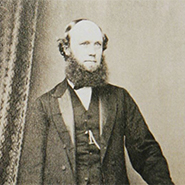 Dr James Corrigan served as the first Headmaster of Wesley College from 1866 to 1871. Much admired, he died in office in 1871.
Dr James Corrigan served as the first Headmaster of Wesley College from 1866 to 1871. Much admired, he died in office in 1871.
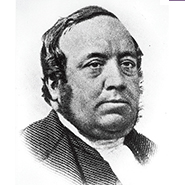 Rev Daniel Draper was one of the driving forces in the foundation of Wesley College. Rev Draper and his wife perished on the same day the College opened , when the SS London sank en route to Melbourne.
Rev Daniel Draper was one of the driving forces in the foundation of Wesley College. Rev Draper and his wife perished on the same day the College opened , when the SS London sank en route to Melbourne.
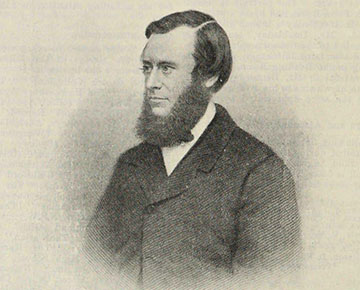
Walter Powell
Walter Powell was a successful businessman and philanthropist. In 1865 he added to his already generous benefaction with a gift of ₤1,000 to the College. He is recognised in many ways at Wesley, most notably with the annual Walter Powell Scholarship award.
Cadet Corps
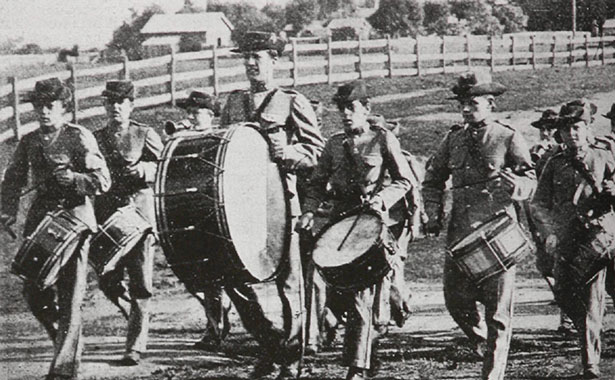
The Cadets Corps was established in 1867.
HRH the Duke of Edinburgh visited Victoria and, on the suggestion of Frederick Sargood, a cadet corps was formed at the school to welcome the Duke. The Wesley Cadet Corps operated until 1975.
1869

The earliest known photograph of Wesley College, taken in December 1869, shows the College in splendid isolation. The adult figure centre left is thought to be Rev James Waugh with Dr James Corrigan centre right. The boys at left pose at playing cricket.
Sport
Sport has always been an important part of College life. The Victorian emphasis on a healthy mind in a healthy body was encapsulated by extraordinary athlete LH Kelly (pictured right). Kelly served in the First World War before returning to Wesley College as a master.

Wesley College made its first appearance in Public School
Football in a game with Melbourne Grammar School in 1869.
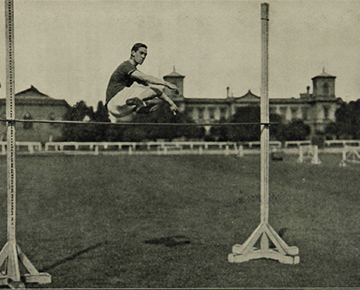
The first Wesley College sports meeting was held in 1869 under the title ‘Athletic Games’.
1870 - 1890
In 1870, Wesley College boasted 207 pupils, 62 of whom were boarders.
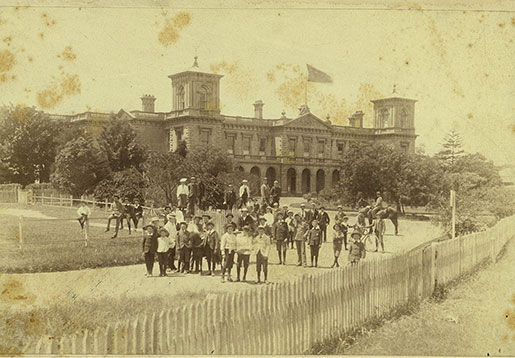
Early 1870s image of Wesley boys in front of the College.
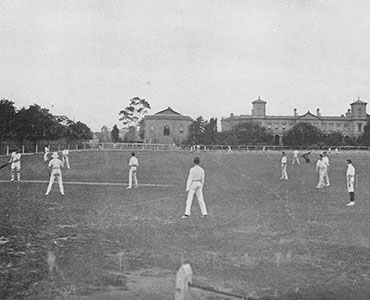
Wesley’s players competed for the first time in Public
School Cricket.
1871
 Wesley crews rowed for the first time in Public School Rowing, winning Second Crew. From left, Stephens (stroke), Tatchell (3), Permewan (2) and G. Stewart (bow) with cox J. Hester.
Wesley crews rowed for the first time in Public School Rowing, winning Second Crew. From left, Stephens (stroke), Tatchell (3), Permewan (2) and G. Stewart (bow) with cox J. Hester.
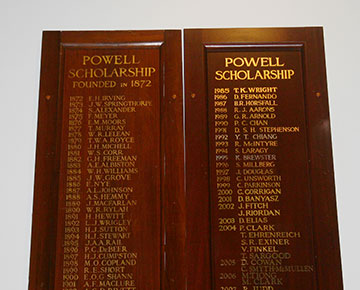
Walter Powell Scholarship
The Walter Powell Scholarship was inaugurated.
Anne Powell (wife of Walter Powell, one of the College founders) donated ₤1,000 for the funding of two scholarships – the Walter Powell Scholarships. An absolute condition was that the successful competitors must be matriculated students and proceed with their undergraduate course at university. The scholarship continues to be awarded annually.
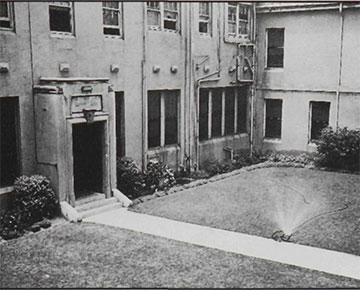
Nye Quadrangle
Extensions were added to the College to create what is now the Nye Quadrangle, named in honour of Rev Edward Nye.
The new building became the College Dining Room, now the Cato Room.
1874
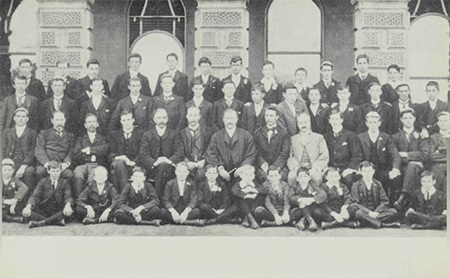
1874 was a record year for enrolments that would hold until 1905, with enrolments reaching 271, 59 of whom were boarders.
1876
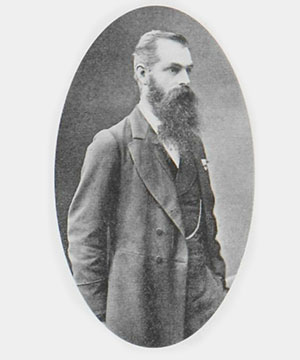
Professor HM Andrew MA, third Headmaster of the College, served from 1876 to 1881.
Henry Andrew was a brilliant, intense and at times controversial headmaster. Andrew was demanding and did ‘not spare the rod’ in directing his charges.
The prefect system
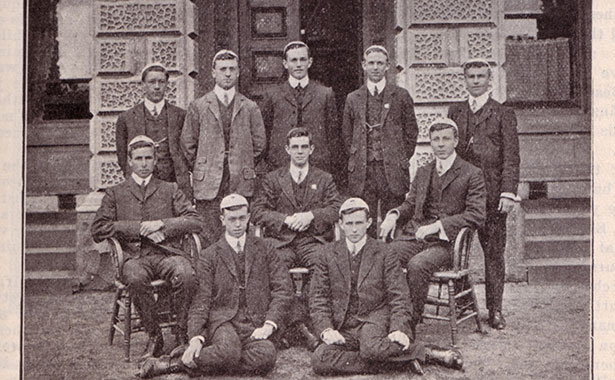
The prefect system was introduced.
1877
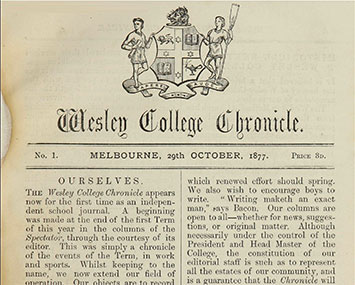
The College crest was revealed in the first edition of the Wesley College Chronicle, published in October 1877.
The Wesley College Chronicle has been published every year since 1877. The crest was conceived by Frank Goldstraw when he was still a master (Goldstraw became Headmaster in 1893).
The crest acknowledges the Southern Cross in the cross quarters of the shield and visually interprets the Wesley College motto. The lion passant, or standing, in the first quarter symbolises the courage, vigilance and readiness to act of the daring in pursuit of wisdom; the books in the second and third quarters symbolise the wisdom to be gained from learning; and the lamp in the fourth quarter symbolises the light of wisdom.
1878
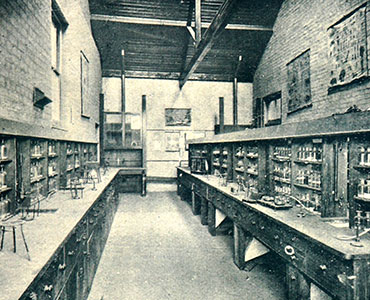
The chemical laboratory was built and placed under the charge of an experienced analytical chemist.
1882
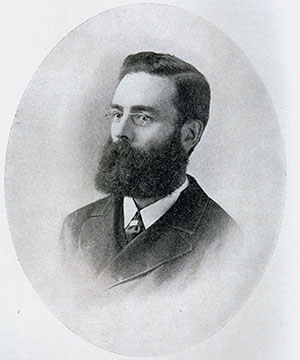
Arthur S Way MA, fourth Headmaster, served from 1882 to 1892.
Arthur Way came to Melbourne in September 1881 to take up his appointment as Headmaster of Wesley in 1882, serving until 1892. Way is spoken of affectionately by those who knew him well, but his time at Wesley was not always happy. According to The History of Wesley College 1865-1919, ‘Mr Way wanted to teach Greek and Latin; the parents – particularly the fathers – thought dead languages useless, and cried out for commerce. Mr Way wanted to get the boys to start at the school as early as possible, so that they could benefit from a progression and consistency in their studies; the fathers preferred to keep them, free of charge, at the state schools as long as possible, with a finishing touch at a public school.’
Old Boys’ Society
The first Old Boys’ Society – later named the Old Wesley Collegians’ Association – was formed on 2 June 1882.
Sweyn Lemme (OW1875) was virtually the founder of the Old Wesley Collegians Association, for although the institution was established in 1882, through lack of interest it had lain dormant for 10 years until a circular bearing his signature was issued in 1895, which had the effect of reviving the Society. Under Lemme’s guidance as the Hon Secretary the association was reorganised and has enjoyed a prosperous career ever since.
1884
Second President of the College Rev EI Watkin DD, served from 1884 to 1890.
Scholarships at Wesley College
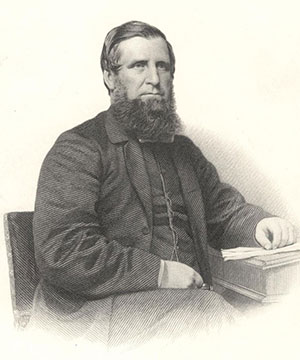
A number of scholarships were created to commemorate individuals who played a key role in the early decades of the College. The Waugh Scholarship was created in memory of the first President of the College, the Rev Dr J S Waugh. The James Corrigan Scholarship was created in memory of the Headmaster of the College, and the Eggleston Scholarship was created in memory of the Rev John Eggleston who was secretary of the College Committee.
1889
Form captains were instituted to be school community leaders responsible for and an example to younger students.
1890
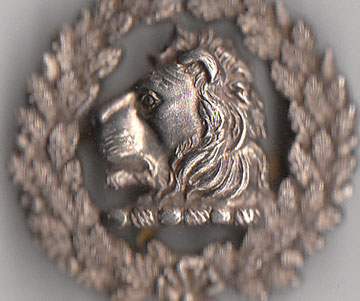
The first Triple Colours in sport were awarded to SJ Donahoo.
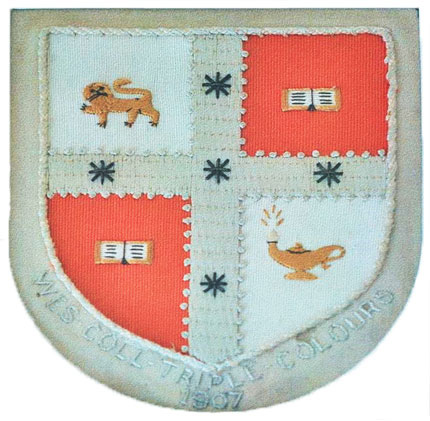
The Athletic Code was introduced.
1891
Scholarships
The Watkin, Rigg and Dare Scholarships were introduced.
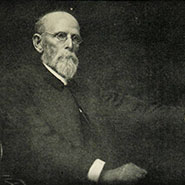 The Watkin Scholarship was created in honour of Reverend EI Watkin DD, President of the College from 1884 to 1890.
The Watkin Scholarship was created in honour of Reverend EI Watkin DD, President of the College from 1884 to 1890.
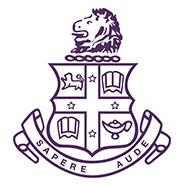 The Rigg Scholarship was created in honour of the Rev Alfred Rigg, President of the Wesleyan Conference and Honorary President of the College in 1891.
The Rigg Scholarship was created in honour of the Rev Alfred Rigg, President of the Wesleyan Conference and Honorary President of the College in 1891.
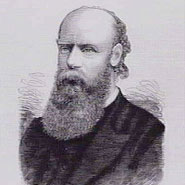 The Dare Scholarship was created in honour of the Rev Joseph Dare DD, eminent minister of the Wesleyan Methodist Church in Victoria.
The Dare Scholarship was created in honour of the Rev Joseph Dare DD, eminent minister of the Wesleyan Methodist Church in Victoria.
1893
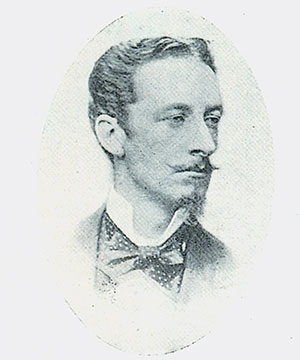
Frank Goldstraw MA, fifth Headmaster of the College, served from 1893 to 1895.
Frank Goldstraw loved Wesley College and served as a master and then as Headmaster. He was an extremely talented artist. His tenure as Headmaster coincided with the economic crash in Victoria when College enrolments plummeted.
Wesley College Song Book
The first edition of the Wesley College Song Book – with seven songs – was published.
The Wesley College Song Book was first published in 1893. Since then there have been 14 editions. Singing continues to be part of College tradition and each student and staff member receives a copy of the Song Book on first entry to the College.
1894 - 1895
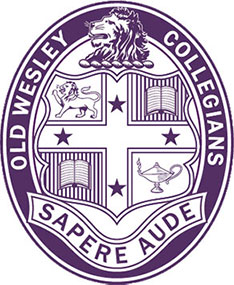
After 12 years of non-operation, a meeting of 100 former students made the decision to reconstitute the Old Wesley Collegians' Association (OWCA).
The Old Wesley Collegians' Association (OWCA, originally called the Old Boys’ Society) was founded in 1882 when a group of young students decided to form a society to which all former students would be members. The chief objective of the society was to hold ‘social gatherings of its members and foster the interest of Collegians’. This youthful enthusiasm lasted for just two years. A hiatus of 12 years followed until 1895 when a meeting of 100 former students decided to form the OWCA.
Since that date the OWCA has maintained an unbroken link with the school. The present constitution of the OWCA states , ‘the objects of the Association shall be to promote the welfare of Wesley College and to unite former Wesley Collegians for that purpose’.
1895
As the impact of the recession hit, enrolments reached a low mark of 93.
The Panic of 1893 produced a ripple effect that, combined with drought and poor harvest, depressed the local economy.
1896
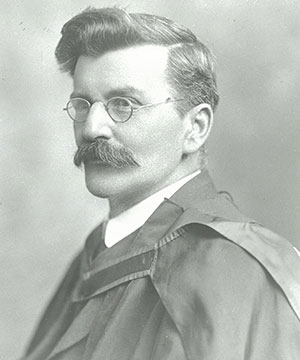 Arthur R Stephenson MA, sixth Headmaster of Wesley College, served from 1896 to 1897.
Arthur R Stephenson MA, sixth Headmaster of Wesley College, served from 1896 to 1897.
Arthur Stephenson's tenure was short as he grappled with falling enrolments in the aftermath of the banking crisis of 1891 to 1893. By July 1896 there were only 74 pupils enrolled and a sub-committee was appointed to consider the future of the College.
1898
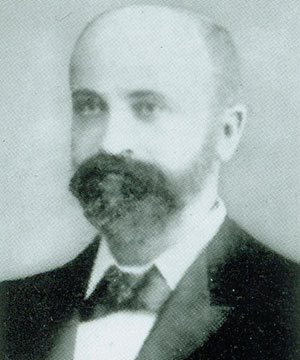 Thomas Palmer MA LLB , seventh Headmaster of the College, served from 1898 to 1901.
Thomas Palmer MA LLB , seventh Headmaster of the College, served from 1898 to 1901.
Hardly an image of Palmer survives in the school archives. His management of the College and its funds was the subject of some conjecture and debate.
1899
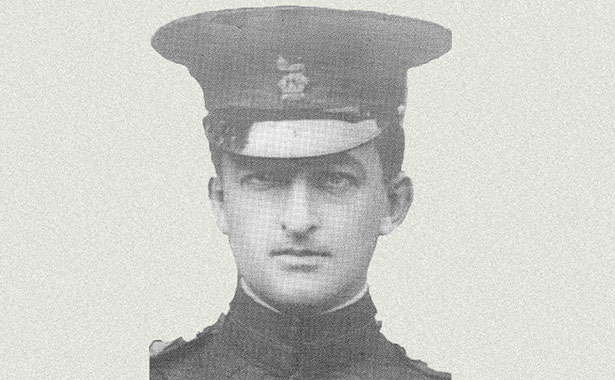
Twenty-nine Old Wesleyans enlisted and all returned home after serving in the South African (Boer) War between 1899 and 1901.
